


Framed or unframed, desk size to sofa size, printed by us in Arizona and Alabama since 2007. Explore now.
Shorpy is funded by you. Patreon contributors get an ad-free experience.
Learn more.

- Freeze Frame
- Texas Flyer wanted
- Just a Year Too Soon
- WWII -- Replacing men with women at the railroad crossing.
- Yes, Icing
- You kids drive me nuts!
- NOT An Easy Job
- I wonder
- Just add window boxes
- Icing Platform?
- Indiana Harbor Belt abides
- Freezing haze
- Corrections (for those who care)
- C&NW at Nelson
- Fallen Flags
- A dangerous job made worse
- Water Stop
- Passenger trains have right of way over freights?
- Coal
- Never ceases to amaze me.
- Still chuggin' (in model form)
- Great shot
- Westerly Breeze
- For the men, a trapeze
- Tickled
- Sense of loneliness ...
- 2 cents
- Charm City
- What an Outrage
- Brighton Park
Print Emporium
Ann Rosener
Prison Break: 1943
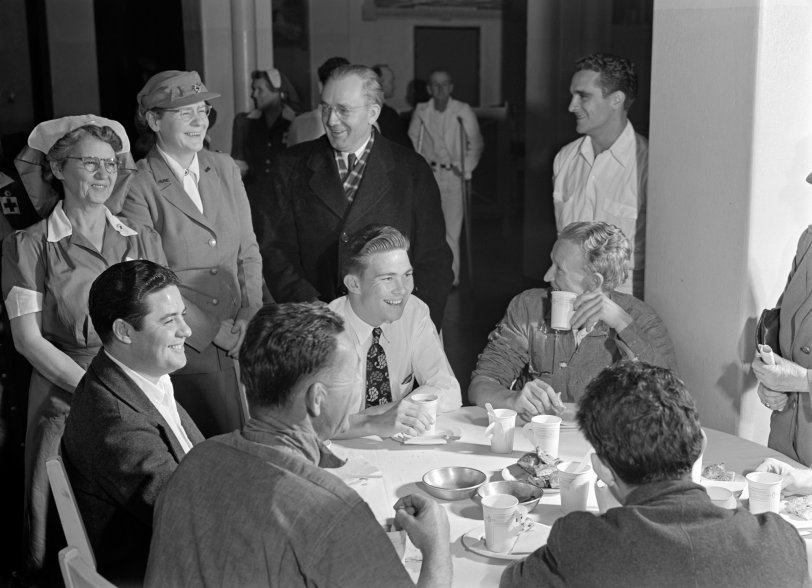
1943, Marin County, California. "Coffee and cakes taste pretty good to these San Quentin prisoners who have just given blood to the Red Cross mobile unit. Of the hundreds of men who volunteered to give blood to the bank, 150 were taken care of during the unit's four-hour visit to the penitentiary. Warden Clinton T. Duffy (black overcoat), who encourages such activities at the prison, chats with several Red Cross workers." Photo by Ann Rosener for the Office of War Information. View full size.
Knows the Drill: 1942
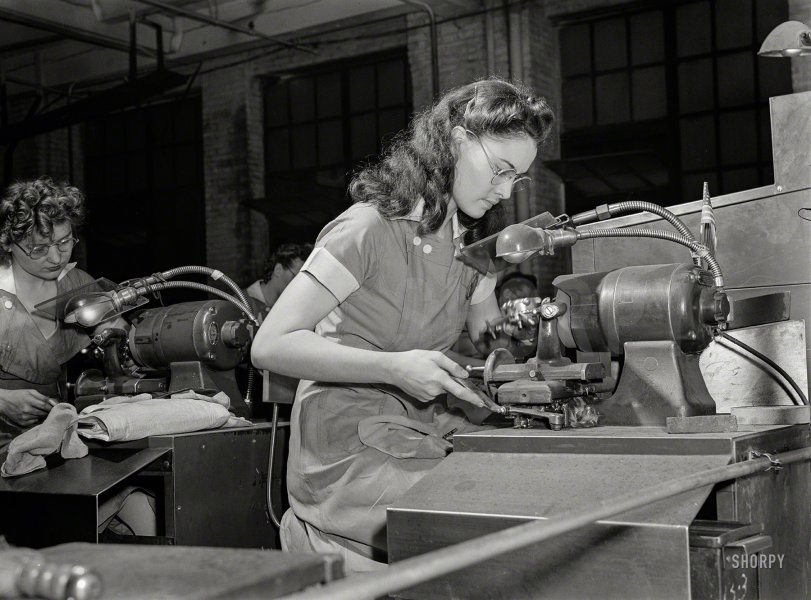
August 1942. "Women in industry. Tool production. A job which was formerly done by hand (and by men) is done in this large Midwest drill and tool plant by women at machines. These young workers are putting precision-ground points on drills which will be used in production of America's ships, tanks and guns. It takes at least four months to train these young women in the operation of these machines, but at the end of that period their work is speedy and efficient, and this company has found that both production and the quality of the drill points have improved. Republic Drill and Tool Company, Chicago." Photo by Ann Rosener for the Office of War Information. View full size.
- 2 comments
- 15939 reads
Lever of Power: 1942
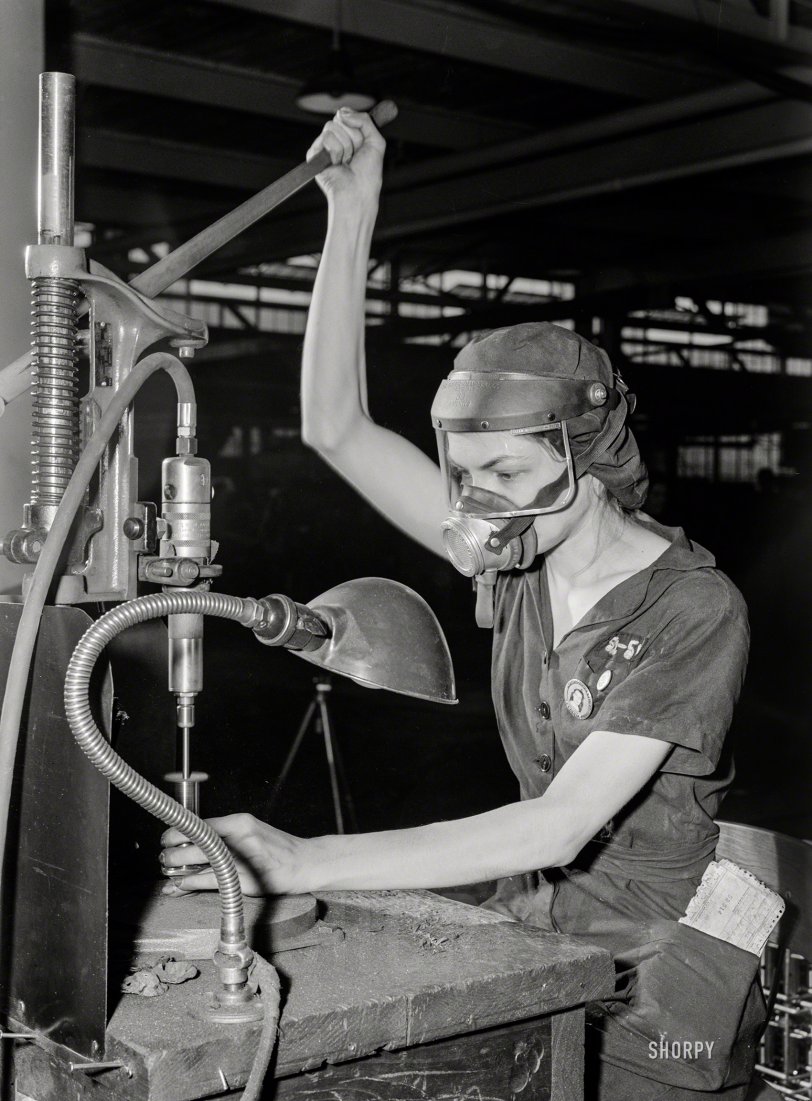
August 1942. "Women in industry. Aircraft motor workers. A million-dollar baby, not in terms of money but in her value to Uncle Sam, 21-year-old Eunice Hancock, erstwhile five-and-ten-cent store employee, operates a compressed-air grinder in a Midwest aircraft motor plant. With no previous experience, Eunice quickly mastered the techniques of her war job and today is turning out motor parts with speed and skill. Note protective mask and visor, two vital safety accessories." Photo by Ann Rosener for the Office of War Information. View full size.
- 4 comments
- 22258 reads
The Corn Is Gray: 1942
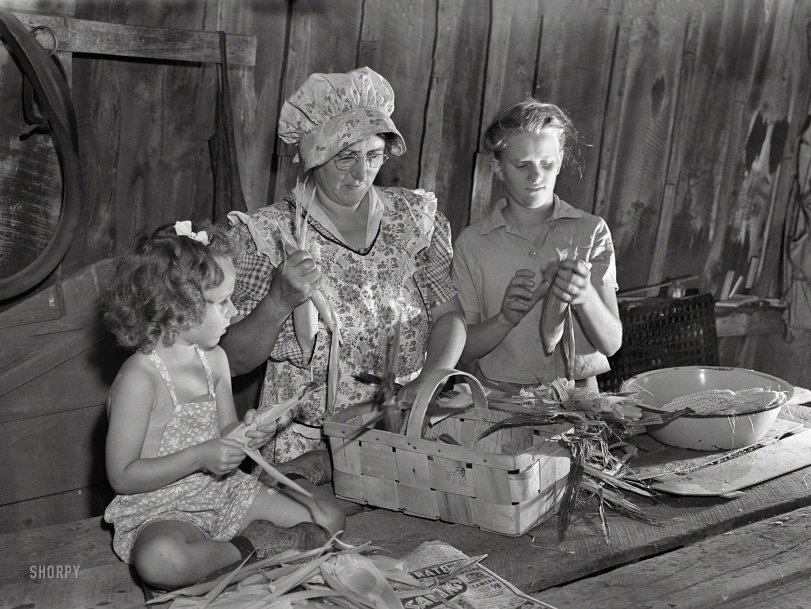
Sept. 1942. Canfield, Ohio. "Mrs. Harry Mercer, a young neighbor and grandchild, husking and removing silk from the corn. The corn will be dried and stored for later use." Photo by Ann Rosener, Office of War Information. View full size.
- 1 comment
- 7707 reads
A to Z: 1943
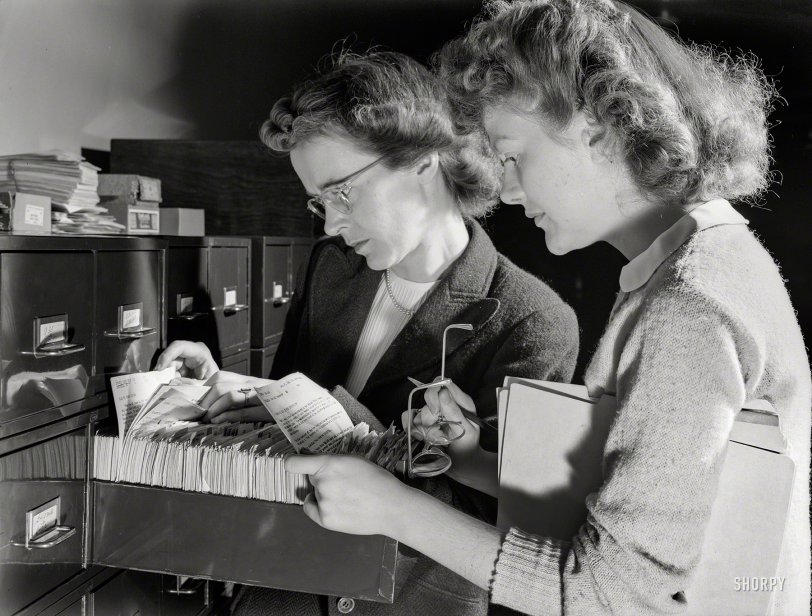
May 1943. "Washington, D.C. Office of War Information research workers." Photo by Ann Rosener for the Office of War Information. View full size.
- 3 comments
- 7833 reads
Farm Table: 1943
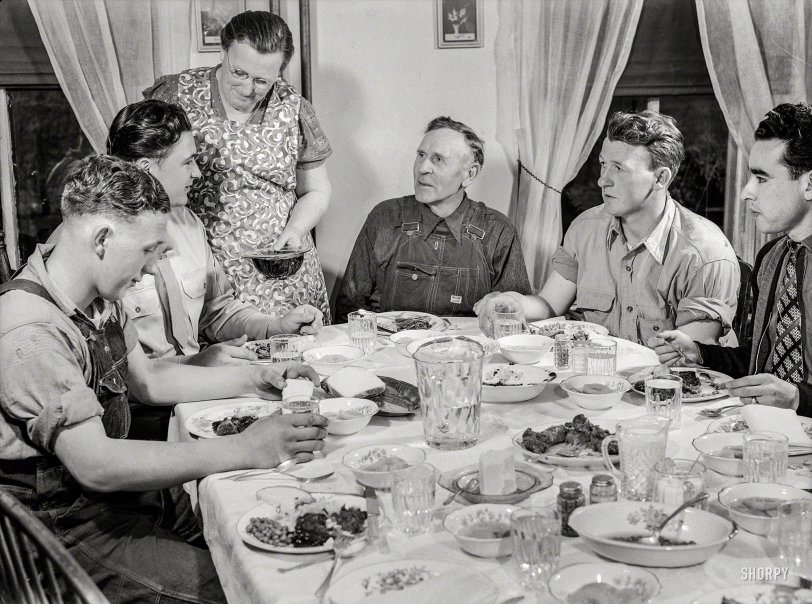
July 1943. "Rockville, Maryland (vicinity). Private Harvey Horton, visiting the N.C. Stiles dairy farm while on furlough from Fort Belvoir, Virginia, at dinner with the family." Including, at left, 16-year-old Charles Stiles. Photo by Ann Rosener for the Office of War Information. View full size.
- 7 comments
- 15111 reads
Manned by Women: 1942
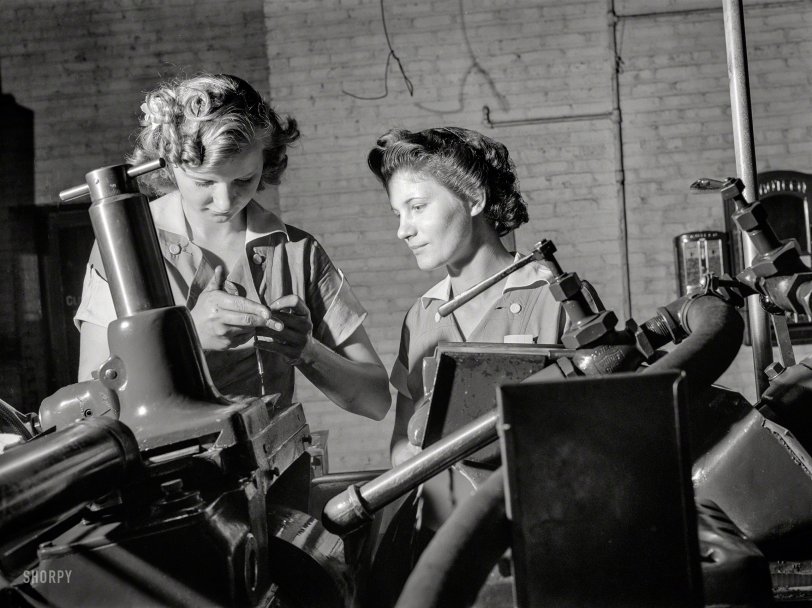
August 1942. Republic Drill and Tool Co., Chicago. "Pioneers of the production line, these two young workers are among the first women ever to operate a centerless grinder, a machine requiring both the knowledge of precision measuring instruments, and considerable experience and skill in setting up. In this Midwest drill and tool plant, manned almost exclusively by women, centerless grinders have been efficiently operated by women for more than a year, and company production figures have continued to soar." Medium-format nitrate negative by Ann Rosener for the Office of War Information. View full size.
- 7 comments
- 13766 reads
Attic Bride: 1942
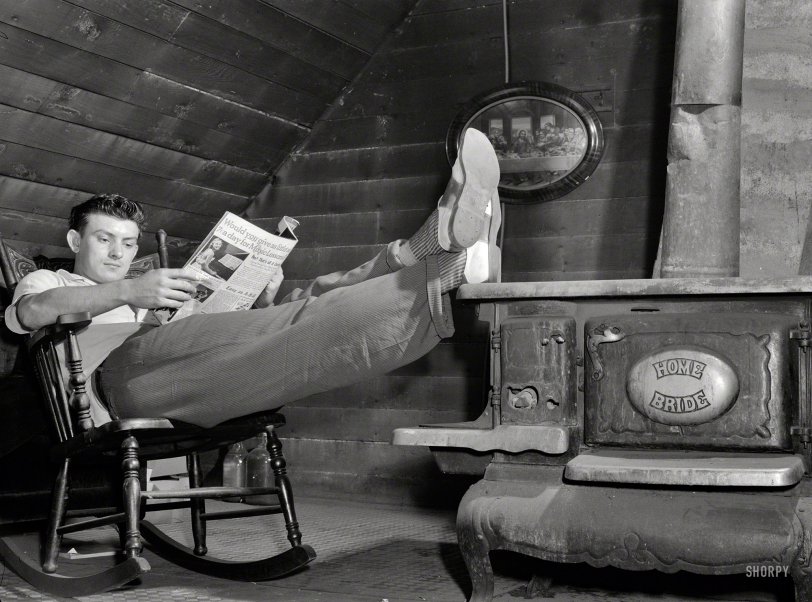
September 1942. "Manpower. Americans all. Husky, bright-eyed Joe Gore Jr. is a young American of Polish descent who is determined that Hitler shall be driven from Poland and kept from America's shores. Machining medium tank parts in a Midwest plant during most of the daylight hours leaves Joe in a quite weary state when evening rolls around. Joe's home shows vestiges of 'old country' influences, but his own personal attic sanctum is solid Americana. Note the Home Bride, and the rocker that any mountain home would welcome. Pressed Steel Can Co., Chicago." Photo by Ann Rosener, Office of War Information. View full size.
- 1 comment
- 11944 reads
Vacuum Cleaner Cleaner: 1942
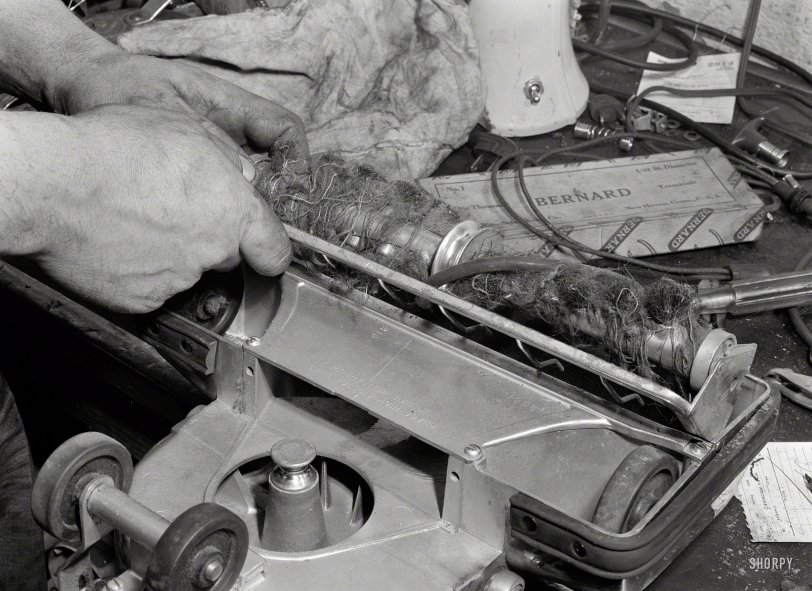
February 1942. "Portrait of a mistreated vacuum cleaner. It's in the repair shop because it inhaled bits of metal, pieces of wire, hairpins, and other harmful objects. Keep the machine away from such things, clean the brushes and belt regularly, and empty the bag at least once a week." Actually, if your Hoover looks anything like this, you should probably just incinerate it by burning down your filthy house. Photo by Ann Rosener, Office for Emergency Management. View full size.
- 8 comments
- 10155 reads
Feminine Propensities: 1942
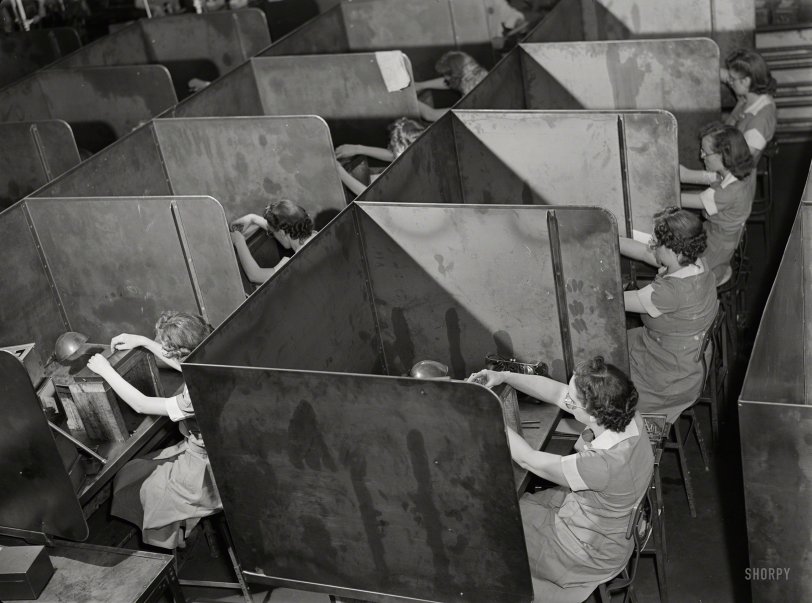
August 1942. "Testing small diameter, high-speed twist drills, these women employed by Republic Drill & Tool, Chicago, roll the drills down a slight incline to determine regularity of diameter. It's a job requiring patience and finger dexterity, and these young women possess those definite feminine propensities for just such work." Photo by Ann Rosener, Office of War Information. View full size.
- 2 comments
- 14685 reads
Night Service: 1942
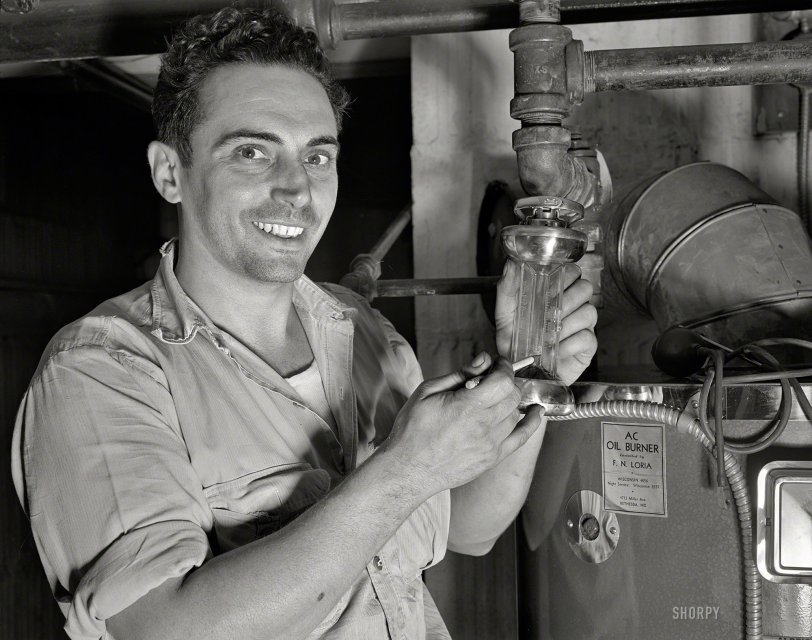
Circa 1942, in the vicinity of Washington, D.C.: "Conservation of fuel oil." When the tradesman takes that pencil from behind his ear and uses it as a pointer, you know he's telling you something important. No photographer credit but we will guess Ann Rosener for the Office of War Information. View full size.
- 5 comments
- 9688 reads
Hearts on Fryer: 1942
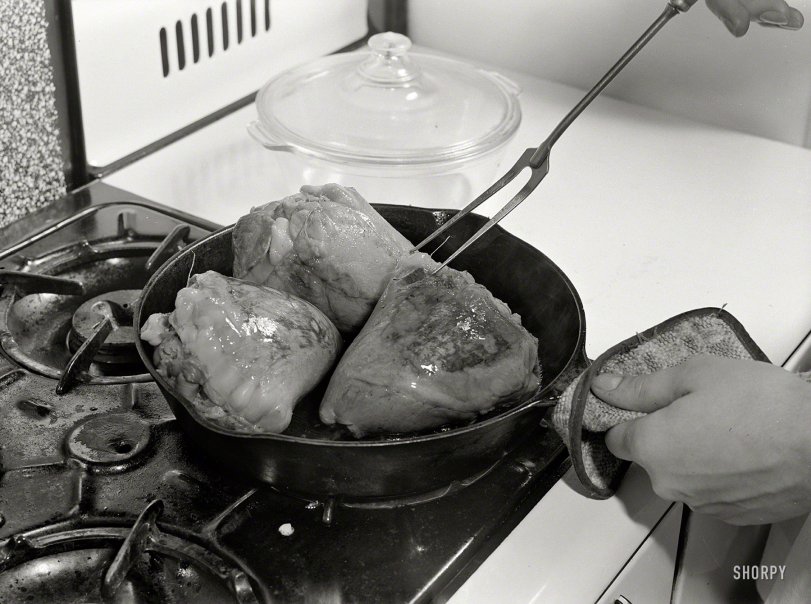
October 1942. "'Share The Meat' recipes. Braised stuffed heart. Brown the hearts on all sides in fat, then place in a covered baking dish or casserole. Add a half of cup of water, cover closely and cook until tender in a very moderate oven (about 300 degrees Fahrenheit). Calf hearts require about one and a half hours, beef hearts will require much longer -- four to five hours to cook till tender." Photo by Ann Rosener for the Office of War Information. View full size.
- 9 comments
- 13686 reads
Virginia Excell: 1942
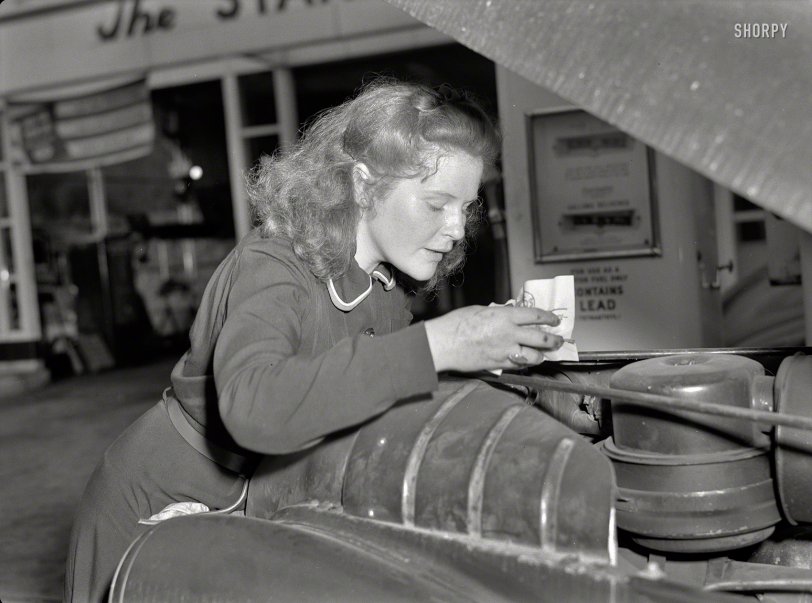
September 1942. "Tires need checking too? Shifting trends of employment in wartime America have opened up new jobs for women such as this young East Liverpool, Ohio, girl who has pioneered in two new fields since graduation from high school. She learned butchering first, and built up quite a reputation as a purveyor of choice cuts. Now she's one of the most efficient service station attendants in the neighborhood. Her name? Virginia Excell." Photo by Ann Rosener for the Office of War Information. View full size.
- 9 comments
- 16821 reads
Home Dehydrating: 1942
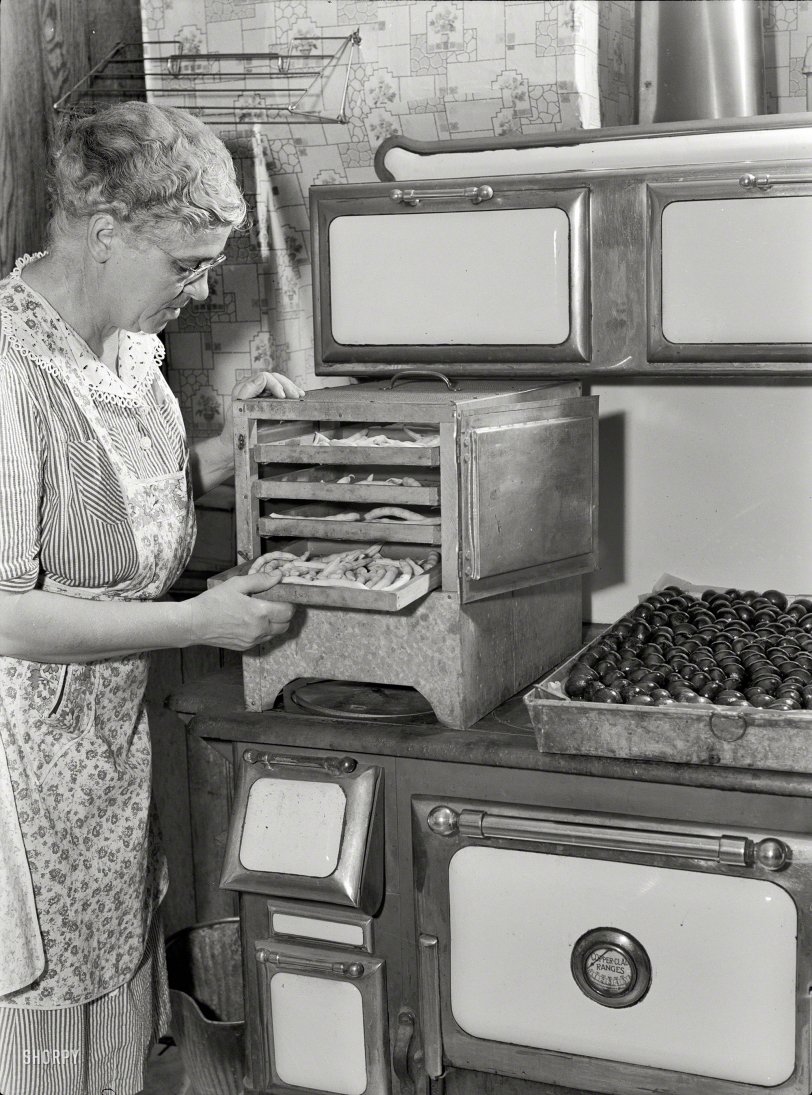
September 1942. Canfield, Ohio. "Mrs. Frank Rogers looking at a tray of blanched pencil pod beans on the dryer on top of a coal and wood range. The beans will dehydrate in the dryer." Also a tin tray of plums waiting to turn into prunes. Photo by Ann Rosener for the Office of War Information. View full size.
- 2 comments
- 14001 reads
Army Angel: 1943
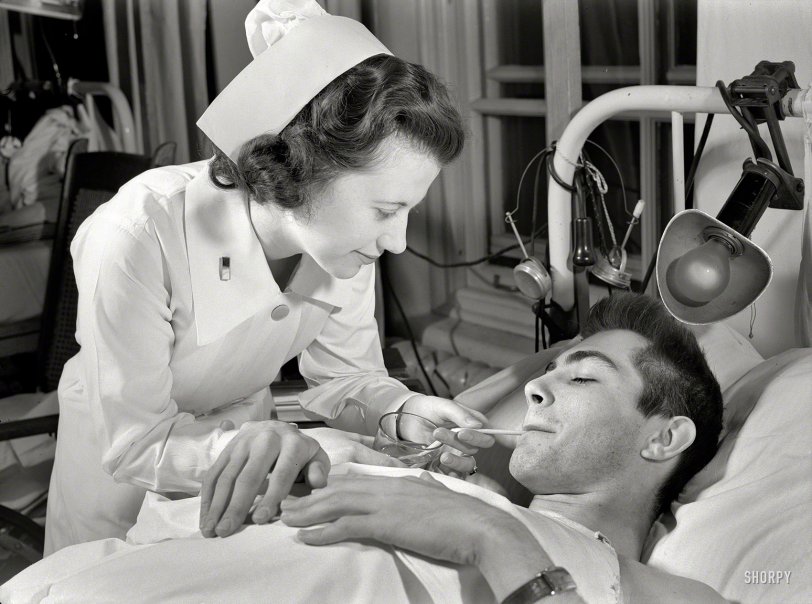
May 1943. Walter Reed Army Medical Center, Washington, D.C. "Encased in a body and leg cast, this soldier must have constant care. Second Lieutenant Frances Bullock, Army nurse, helps him to a drink of fruit juice." Medium format nitrate negative by Ann Rosener for the Office of War Information. View full size.
- 3 comments
- 11999 reads























